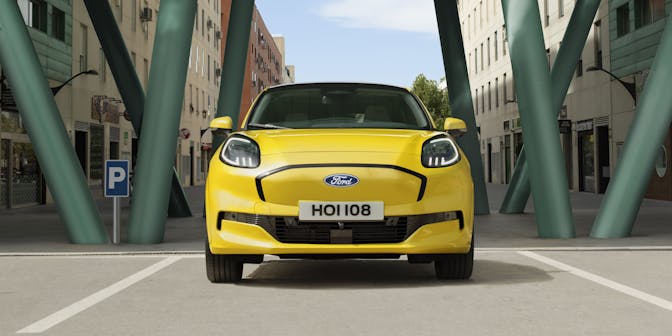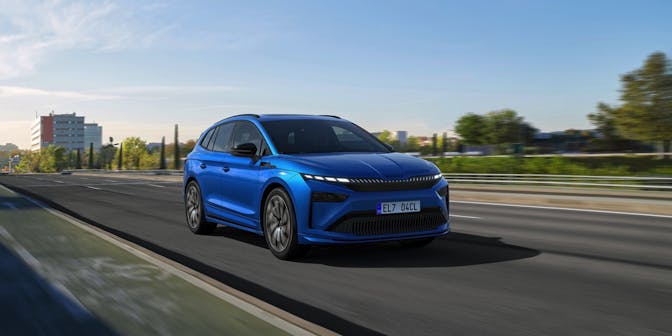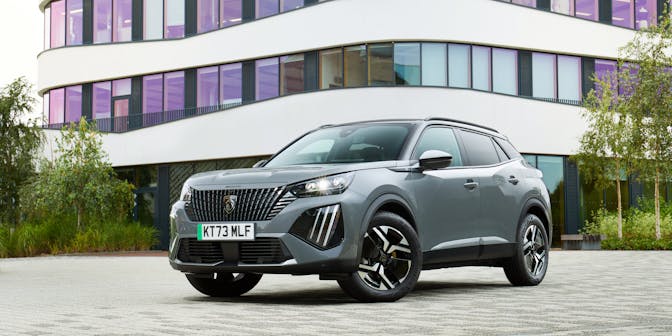Ford E-Transit review
The UK’s most popular large van is now the best electric van in the UK. Ford’s dominance is set to continue...
This is a review for the Ford E-Transit L2 350 RWD
Ford E-Transit at a glance...
-
Huge cargo volume and impressive payload limit
-
Entertaining to drive (for a van!)
-
FORDLiive support included
-
Good real-world vehicle range
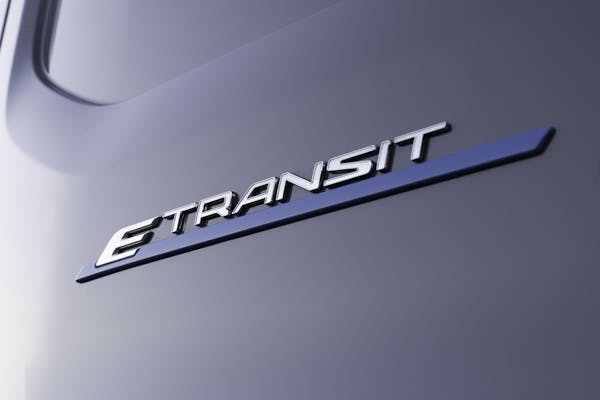
Ford E-Transit design & powertrain
The changes Ford has made to the rear suspension have transformed the Transit, which was already a decent drive. In E-Transit form, it’s even better; it handles more precisely, is more comfortable, and is far more refined.
Even when empty, the E-Transit copes with road surface imperfections far better than the Transit, while the low-mounted battery pack keeps the center of gravity down, aiding stability. With a more responsive chassis, it’s almost fun to drive, feeling surprisingly agile.
That cabin is much like the regular Transits, but the gear lever and handbrake have gone, moved to electric switches on the dashboard. This frees up space inside, which is especially noticeable if you’re the second passenger sitting in the center seat.
Ford will build an E-Transit for you in any one of 15 configurations, with three body lengths, two roof heights and three gross vehicle weights to choose from. Finding the right size for your business should be easy, especially as cargo volumes remain the same as with the diesel-powered Transit; that means anything from 9.5m3 to 15.1m3.
Payload capacity is slightly reduced, thanks to the weight of the battery pack, but can reach an impressive 1,785kg. Our test van, a mid-size L3H2 panel van with a 350GVW chassis, was limited to 980kg with a volume of 11.0m3.

What's the Ford E-Transit like to drive?
The changes Ford has made to the rear suspension have transformed the Transit, which was already a decent drive. In E-Transit form, it’s even better; it handles more precisely, is more comfortable, and is far more refined.
Even when empty, the E-Transit copes with road surface imperfections far better than the Transit, while the low-mounted battery pack keeps the centre of gravity down, aiding stability. With a more responsive chassis, it’s almost fun to drive, feeling surprisingly agile.
The 269hp motor option is tempting, but it’s not vastly different to the 184hp model we have to test. In fact, under everyday use, it’s identical, as the extra power is only unleashed once you've pressed the throttle pedal all the way to the floor.
Even with around 30% less power, the 184hp model — which will undoubtedly be the most popular option —is impressive. You get the immediate surge of power you expect from the 430Nm of torque, so getting moving is painless. There’s enough spare power on the road to keep up with all but the most adventurous of traffic, and it’ll happily cruise at 70mph.
Stay in the city, and it’s great to drive, thanks to the electric powertrain. With no gearbox, progress is smooth and uninterrupted by stop/start systems and diesel clatter. It creates a calm environment in the E-Transit’s cabin.
That cabin is much like the regular Transits, but the gear lever and handbrake have gone, moved to electric switches on the dashboard. This frees up space inside, which is especially noticeable if you’re the second passenger sitting in the center seat.
A 12.0-inch infotainment screen dominates the dashboard and is the hub for most functions. It’s got a crisp, clear screen with quick responses, making it easy to use, although some functions are hidden away a little. It’s disappointing to see most of the climate controls moving to the screen, though, rather than having physical switches.
Watch our E-Transit review
Let Jack take you for a quick spin in the Ford E-Transit electric van, available from DriveElectric.
Charging the Ford E-Transit
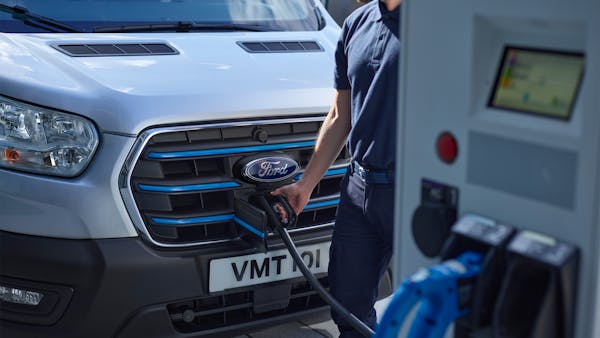
While the e-Transit’s WLTP figure promises a 196-mile range, Ford has taken the unusual step of being more transparent about what the van can do. It suggests it has a ‘dependable’ range of 100 miles, which doesn’t sound impressive. However, that figure can be achieved when the van is fully loaded, on a motorway, in the middle of winter. Given that the average Transit customer covers 59.5 miles a day, that should give plenty of leeway for many users.
Our testing, driving through the Scottish borders and down to Leeds, showed the E-Transit returning 2.5 miles per kWh, giving it a range of 170 miles. While it was lightly loaded, we also spent a lot of time hammering down various A roads and motorways, which does nothing for efficiency. If you need to stop and top up the E-Transit, you’ll be able to do that at 115kW, a fast enough rate from a 15% state of charge to 80% in a little over half an hour. That should be enough to stop at Greggs and grab a coffee and sausage roll.
Conclusion
Ford has turned up with its electric van a little later than many of its competitors, but it’s come up with something spectacularly good.
There are so few compromises made in the transformation from diesel to electric power that, unless you need every last kilogram of payload, you’ll find nothing but competitive advantages for your business in the E-Transit.
Yes, it costs a good chunk more than the ‘normal’ Transit — although far less than some of its less sophisticated rivals — but lower running costs, Ford’s innovative Liive active monitoring, cheaper fuelling costs, and low leasing rates mean its total cost of ownership could be very much in your favour.
It’s taken some time to be credible, but the electric revolution in the LCV world is here to stay.
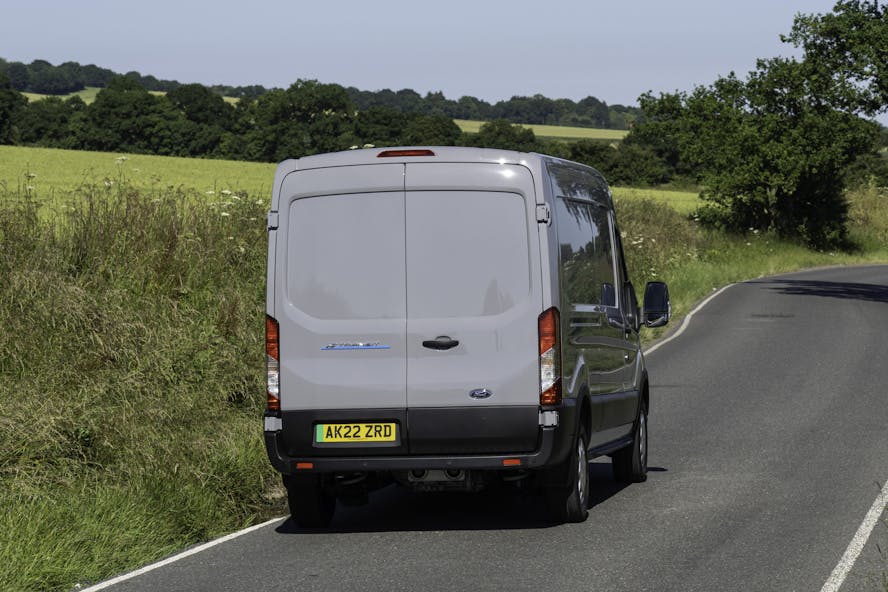
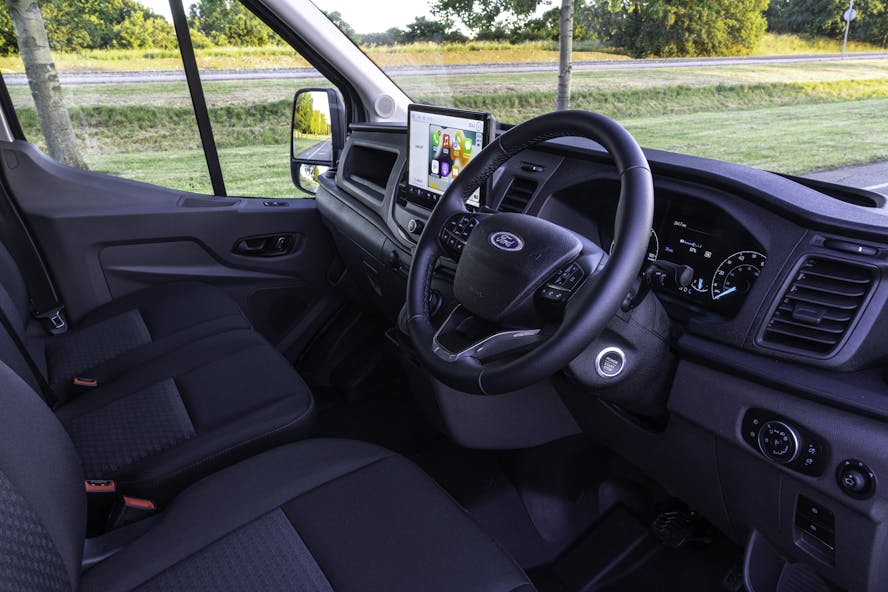
Our top electric van lease picks
Volkswagen ID. Buzz Cargo 210kW Commerce 79kWh Auto
- £3,563.20 Initial rental (ex. VAT)
- 48 Month term
- 5000 Annual mileage
- Subject to status and conditions + arrangement fee
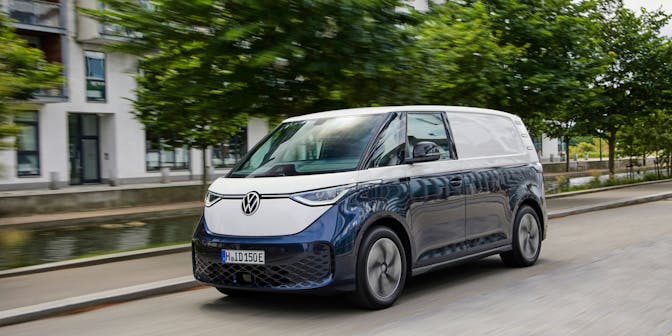
Volkswagen e-Transporter 100kW 65kWh Commerce Plus Van Auto
- £4,546.37 Initial rental (ex. VAT)
- 48 Month term
- 5000 Annual mileage
- Subject to status and conditions + arrangement fee
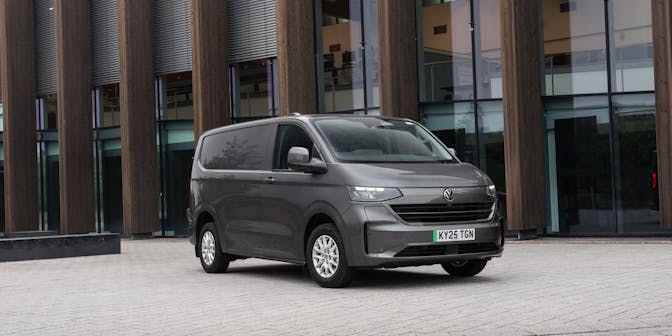
Farizon SV SV L1 170kW 83kWh H1 Van Auto
- £3,701.33 Initial rental (ex. VAT)
- 48 Month term
- 5000 Annual mileage
- Subject to status and conditions + arrangement fee
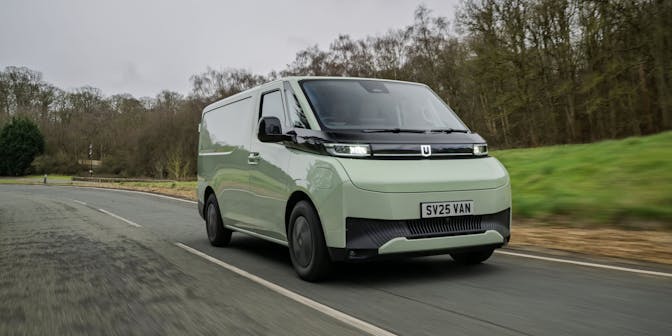
Choose your E-Transit L2 350 RWD van lease
Ford E-Transit L2 350 RWD 198kW 68kWh H2 Leader Van Auto [DAP]
- £5,857.79 Initial rental (ex. VAT)
- 48 Month term
- 5000 Annual mileage
- Subject to status and conditions + arrangement fee
Ford E-Transit L2 350 RWD 198kW 68kWh H3 Leader Van Auto [DAP]
- £5,967.48 Initial rental (ex. VAT)
- 48 Month term
- 5000 Annual mileage
- Subject to status and conditions + arrangement fee
Ford E-Transit L2 350 RWD 135kW 68kWh H3 Leader Van Auto [DAP]
- £6,061.18 Initial rental (ex. VAT)
- 48 Month term
- 5000 Annual mileage
- Subject to status and conditions + arrangement fee
Ford E-Transit L2 350 RWD 198kW 68kWh H2 Trend Van Auto [DAP]
- £6,237.88 Initial rental (ex. VAT)
- 48 Month term
- 5000 Annual mileage
- Subject to status and conditions + arrangement fee
Ford E-Transit L2 350 RWD 198kW 68kWh H3 Trend Van Auto [DAP]
- £6,338.09 Initial rental (ex. VAT)
- 48 Month term
- 5000 Annual mileage
- Subject to status and conditions + arrangement fee
Ford E-Transit L2 350 RWD 135kW 68kWh H2 Trend Van Auto [DAP]
- £6,341.22 Initial rental (ex. VAT)
- 48 Month term
- 5000 Annual mileage
- Subject to status and conditions + arrangement fee
Ford E-Transit L2 350 RWD 135kW 68kWh H3 Trend Van Auto [DAP]
- £6,441.35 Initial rental (ex. VAT)
- 48 Month term
- 5000 Annual mileage
- Subject to status and conditions + arrangement fee
